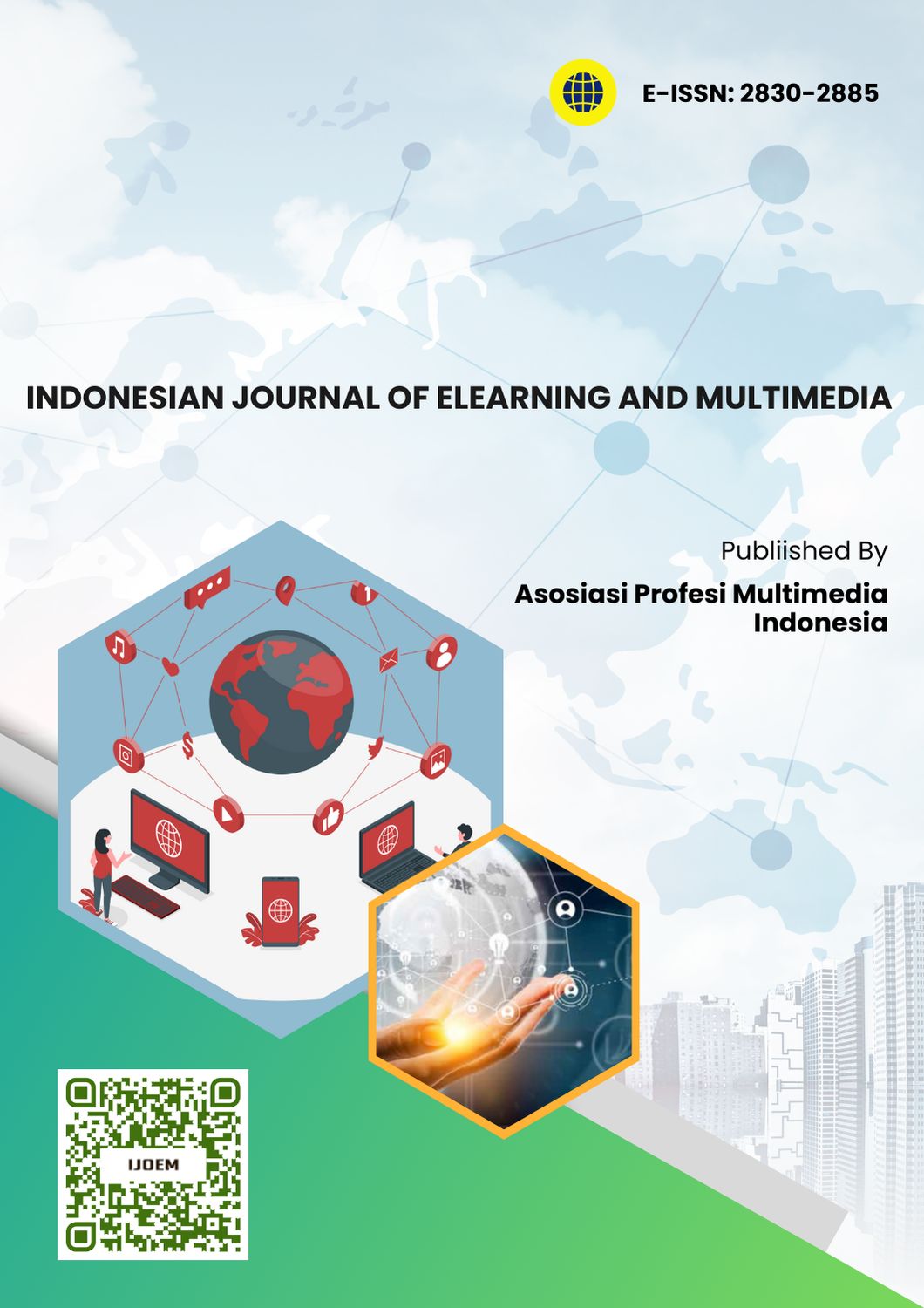Development of Multimedia Based Busy Book Learning Media to Improve Cognitive and Language Abilities in Early Childhood
Main Article Content
Abstract
This study aimed to provide multimedia-based busy book learning resources to enhance the language and cognitive abilities of young children attending Bengkulu City's Lembayung Indah Kindergarten. Both books and multimedia-based busy books are the end products of this research project. Potential and problems, data collection, initial product design, expert validation, design revision, small group trials, product revision I, large group trials, product revision II, and final product are the ten steps that make up this research, which is a development research (Research & Development) using the Borg and Gall model. 36 youngsters made up the sample used in this study, which was selected at random. Children's abilities tests, open interviews, and observation were the methods used to get the data. T tests, percentages, and scores were employed in this study's data analysis. Based on the study's findings, the creation of multimedia-based busy book materials was deemed both practical and successful in enhancing the language and cognitive abilities of young children in group B of Lembayung Indah Kindergarten in Bengkulu City.
Downloads
Article Details
Copyright (c) 2024 Wiwit Indyani, Nina Kurniah

This work is licensed under a Creative Commons Attribution-ShareAlike 4.0 International License.
References
Agustina, I., Aprina Siregar, L., & Liliani Husain, D. (2023). Utilization of Digital Technology in Children’s Education to Enhance Creative and Interactive Learning. Journal of Education, Social, and Culture, 10(2), 2023. https://doi.org/10.32505/tarbawi.v10i2.6970
Ardiana, R. (2022). Strategi Guru dalam Mengembangkan Kemampuan Kognitif Anak Usia 5-6 Tahun di Taman Kanak Kanak. Murhum : Jurnal Pendidikan Anak Usia Dini, 3(2), 1–10. https://doi.org/10.37985/murhum.v3i2.116
Febrianti, R., Suarta, N., & Jaelani, A. K. (2023). Pengembangan Busy Book Untuk Meningkatkan Perkembangan Kognitif Pada Anak Kelompok B. Journal of Classroom Action Research, 5(1), 194–200. https://doi.org/10.29303/jcar.v5i1.2748
Firman, W., & Anhusadar, L. (2022). Peran Guru dalam Menstimulasi Kemampuan Kognitif Anak Usia Dini. Kiddo: Jurnal Pendidikan Islam Anak Usia Dini, 3(2), 28–37. https://doi.org/10.19105/kiddo.v3i2.6721
Gilmore, J. H., Knickmeyer, R. C., & Gao, W. (2018). Imaging structural and functional brain development in early childhood. Nature Reviews Neuroscience, 19(3), 123–137. https://doi.org/10.1038/nrn.2018.1
Ita, E., & Dhiu, K. D. (2021). Pengembangan Busy Book Learning Media Dalam Pembelajaran Bahasa Keaksaraan Pada Anak Usia 5-6 Tahun. Smart Paud, 4(1), 11–22. https://doi.org/10.36709/jspaud.v5i2.4
Lubis, L., Nahar, S., & Simbolon, I. K. (2021). The Role of Guidance Teachers in Optimizing Standards of Child Development Achievement Level in PAUD. EDUTEC : Journal of Education And Technology, 4(4), 711–727. https://doi.org/10.29062/edu.v4i4.186
Masteni, M., & Azizah, N. (2023). Media Busy Book untuk Kemampuan Membaca Permulaan Anak Tunarungu di SLB. Jurnal Obsesi : Jurnal Pendidikan Anak Usia Dini, 7(1), 904–914. https://doi.org/10.31004/obsesi.v7i1.3494
Miftahillah. (2020). Melejitkan Bahasa Anak Usia Dini dalam Islam. Sumbula: Jurnal Studi Keagamaan, Sosial Dan Budaya, 5(3), 424–449. https://doi.org/10.32492/sumbula.v5i2.4311
Mustika, M. (2021). Penyelenggaraan Pendidikan Anak Usia Dini Dengan Acuan Standar Nasional Pendidikan. ANSIRU PAI : Pengembangan Profesi Guru Pendidikan Agama Islam, 5(1), 1–5. https://doi.org/10.30821/ansiru.v5i1.9278
Noble, C., Sala, G., Peter, M., Lingwood, J., Rowland, C., Gobet, F., & Pine, J. (2019). The impact of shared book reading on children’s language skills: A meta-analysis. Educational Research Review, 28(October 2018), 100290. https://doi.org/10.1016/j.edurev.2019.100290
Nurdin, N. (2021). Penerapan Konsep Pembelajaran Inovatif dan Kreatif Melalui Pembelajaran Berbasis Edutainment dalam Pembelajaran di PAUD. Murhum : Jurnal Pendidikan Anak Usia Dini, 2(1), 56–67. https://doi.org/10.37985/murhum.v2i1.32
Rachman, Y. A. (2019). Mengkaji Ulang Kebijakan Calistung Pada Anak Usia Dini. Jurnal Kajian Dan Pengembangan Umat, 2(1), 14–22. https://doi.org/10.31869/jkpu.v2i2.1538
Rai, N. K., & Tiwari, T. (2018). Parental factors influencing the development of early childhood caries in developing nations: A systematic review. Frontiers in Public Health, 6(March), 1–8. https://doi.org/10.3389/fpubh.2018.00064
Rifaldi, F., Cakti, A. W. T., Ardahali, M. Y., & Rum, E. P. (2024). Pengaruh Dialek Bugis Terhadap Kamampuan Berbahasa Indonesia. Guru Pencerah Semesta (GPS), 2(3), 543–551. https://doi.org/10.56983/jgps.v2i3.857
Suryana, D., Tika, R., & Wardani, E. K. (2022). Management of Creative Early Childhood Education Environment in Increasing Golden Age Creativity. Proceedings of the 6th International Conference of Early Childhood Education (ICECE-6 2021), 668, 17–20. https://doi.org/10.2991/assehr.k.220602.005
Trenggonowati, D. L., & Kulsum, K. (2018). Analisis Faktor Optimalisasi Golden Age Anak Usia Dini Studi Kasus Di Kota Cilegon. Journal Industrial Servicess, 4(1), 48–56. https://doi.org/10.36055/jiss.v4i1.4088



 Wiwit Indyani
Wiwit Indyani
